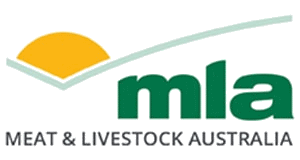Monitoring and managing trace nutrients to maximize pasture productivity in soils constrained by acidity
| Project start date: | 04 September 2023 |
| Project end date: | 15 June 2030 |
| Project status: | In progress |
| Livestock species: | Grass-fed Cattle, Sheep, Lamb |
| Relevant regions: | Southern Australia |
| Site location: | SA: Kangaroo Isalnd - Haines, Newland, Macgillivray |
Summary
This producer demonstration site project aims to overcome lime-induced manganese (Mn) deficiency, thereby increasing the adoption of liming to counteract soil acidity and educating the next generation on the importance of monitoring and managing trace elements to boost pasture and livestock productivity. Soil acidity affects over 200,000 hectares (70%) of KI farmland, costing $7 million annually in lost production. While lime application is common, sandy ironstone soils (70,000 ha) show Mn deficiency post-liming, with 80% of soil pits having Mn levels below 10 mg/kg. This deficiency reduces productivity for up to five years, and about 25% of producers have stopped liming due to Mn tie-up, though some have seen positive results with manganese sulphate.
This project also addresses the loss of knowledge between generations, as many young farmers on KI have never included trace element mixes in their fertiliser regime. It includes leaf tissue and soil testing for all trace elements, feed tests for metabolizable energy (ME), and field days to guide producers in sampling, data interpretation, and developing trace element management strategies to maximize pasture growth and livestock health.
Objectives
By December 2029 Agriculture Kangaroo Island will engage at least 6 core producers and 20 observer producers to:
Increase the adoption of monitoring and managing trace elements to increase pasture/livestock productivity:
- 100% core producers and 70% of observers will have undertaken soil or leaf tissue sampling on susceptible soil types to quantify the impact of soil pH and trace element status on pasture productivity.
- 75% of core producers and 50% of observers will have limed pastures and applied trace elements as required resulting in a 20% increase in pasture productivity resulting in an improvement in stock health and productivity.
Set up a three demonstration sites across susceptible soil types, monitoring feed quality (ME) and quantity.
- Identified the best option (in terms practicality and cost effectiveness) to overcome Mn deficiency.
- Provided hands on practice in monitoring for trace elements and feed value, interpretation of the data and determining appropriate trace element management strategies to 20 producers.
- Conduct a cost/benefit analysis to determine the relative economic value of the proposed treatments on feed base productivity compared to current practices.
- Conduct an annual field day, biennial guest speaker event and ongoing media (e-news, press releases, papers) to educate local farmers about the project and findings and encourage adoption of key practice changes. Messages to be received by 150 producers/yr
- 100% of core producers and 50% of observers have increased their knowledge and skills in:
- understanding the role of trace elements in pasture and livestock productivity
- identifying trace element deficiency in pastures
- being able to know how to effectively and accurately monitor their own soils and pastures for trace element deficiencies.
Get involved
To find out more contact the PDS facilitator:
Lyn Dohle
Anna Osman


